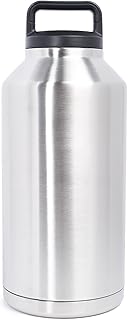




 2
2




Pecan Media: food forestry and forest garden ebooks
Now available: The Native Persimmon (centennial edition)
 1
1





 2
2




Sometimes the answer is nothing

 2
2




Pecan Media: food forestry and forest garden ebooks
Now available: The Native Persimmon (centennial edition)
 5
5




out in the garden

 3
3




 3
3










Skandi Rogers wrote:Now I will start by saying I do not preserve meat or anything that is not acidic or sugary but in the UK and here in Denmark no one even considers "water bathing" jars are filled with boiling jam or pickles, and then closed often they are left to cool and THEN closed so the fruit is better distributed. This is normal practice and will be found advised in published books and seen on TV. Also the jars are not what Americans call jars, they are normally reused jam jars with reused lids.
I make and sell preserves and there is no requirement to waterbath them, only that they must be in new jars and new lids, and sold direct to the consumer. In Denmark they expect preserves to contain Sodium benzoate which actually makes waterbathing impossible as it decays at 100C. For my personal consumption I do not add this but anything that might be sold does get it. As to recipes there are no "Official" recipes.
I do think that preserving meat by canning would be a lot of extra work in the society you are talking about, would older methods like salting or pickling work better, or would be end result not be to anyone's taste?
out in the garden

 2
2




 4
4




 1
1




William Bronson wrote: I think smoking would be the best way to preserve the meat.
Adding smoked meat to a soup would be delicious and easy.
 2
2




Zone 4B
New Brunswick, Canada




 1
1








 1
1




Scott Harper wrote:This is a very informative discussion but, frankly, I just want Dale's Chicken soup recipe that is so good he can have it "eight days a week". How about it Dale? Care to share?
 1
1




Zone 4B
New Brunswick, Canada
 1
1




To lead a tranquil life, mind your own business and work with your hands.




Debi Baker wrote:Then, we take the heads, feet, bones, skin and cook for a long time to make broth, put in some cider vinegar to help get minerals out of bones. Let it strain, let the broth cool and take the fat off of the top, that fat needs to be used, refrigerated to use, or frozen, you don't want to can with alot of fat as it can migrate up and ruin the seal on the jar. There will be some fat left in the broth. So this broth can be pressure canned to use later. Then you can take any meat that you strained out and use it or feed it and the skin to the dogs
To lead a tranquil life, mind your own business and work with your hands.
 1
1




'Every time I learn something new, it pushes some old stuff out of my brain.'
 1
1




F Agricola wrote:
Have you considered lowering meat consumption, which isn't a hard thing to do in a hot climate?
To lead a tranquil life, mind your own business and work with your hands.

|
Wanna see my flashlight? How about this tiny ad?
Support permies and give beautiful gifts to gardeners: permaculture playing cards.
https://gardener-gift.com/
|







